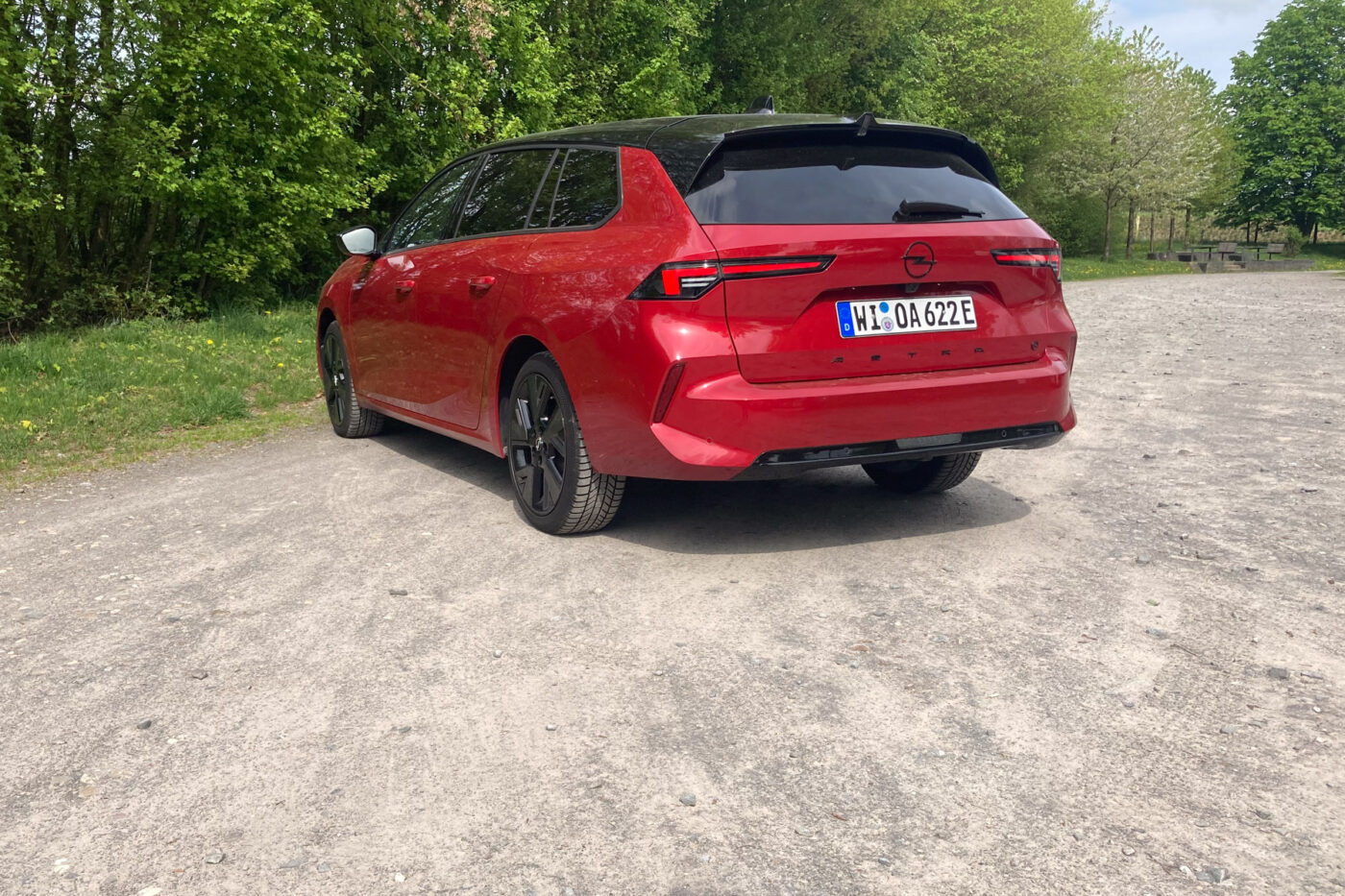
Opel Astra Sports Tourer Electric: Good, but good enough for 2024?
Everything in the car industry is being trimmed for economic efficiency, with models, body versions and drive variants being put to the test. What is no longer profitable is no longer built. For example, the global decline in demand for estate cars means that manufacturers are using the ongoing transformation to electric mobility to replace the estate model with an electric SUV. The batteries can be stowed better in a higher vehicle than in a flat estate. Producing a saloon, an estate, and an SUV is too expensive, so only two vehicles are usually offered.
If you want or need more space, you (inevitably) have to go for an SUV. Not so at Opel. The German carmaker is sticking to the tradition of compact estate cars. It began in 1963 with the Kadett A, which is now in its ninth generation and still has an estate car in its range. And since the Astra is also available as an all-electric model, the estate is also available with an electric drive. We already got behind the wheel of the Astra Sports Tourer Electric for a quick test drive in December. However, as the sudden onset of snowfall had turned the roads around Rüsselsheim into a slippery slope and traffic was at a standstill, it was hardly possible to draw any meaningful conclusions – especially regarding fuel consumption.
Therefore, it was clear that the Astra had to be tested under better conditions! Opel provided a virtually identical test car for this purpose: the Astra Sports Tourer Electric in GS trim, painted in the free standard colour Cardio Red.
Surprisingly low energy consumption
Fortunately, the conditions were different. At 15 to 23 degrees, the temperatures were much closer to the electric car’s comfort zone, if not perfect. Of course, this significantly impacted consumption – even if 22 kWh/100 km on short journeys was not a bad result, given the snow flurries’ adverse conditions. The question is: How far does consumption drop?
The answer: quite a bit! In our test, we covered 283 kilometres on one charge (the battery was 93 per cent charged at the start) before we drove to the charging station with 13 per cent charge remaining. The on-board computer displayed an average consumption of 14.5 kWh/100 km, although the 283 kilometres were mainly on country roads and motorways. But even with a higher proportion of motorway driving, consumption does not increase immeasurably. The journalist from whom we took the test car travelled in Croatia with the Astra Sports Tourer Electric. After 2,285 kilometres, the on-board computer consumption was 15.4 kWh/100km.
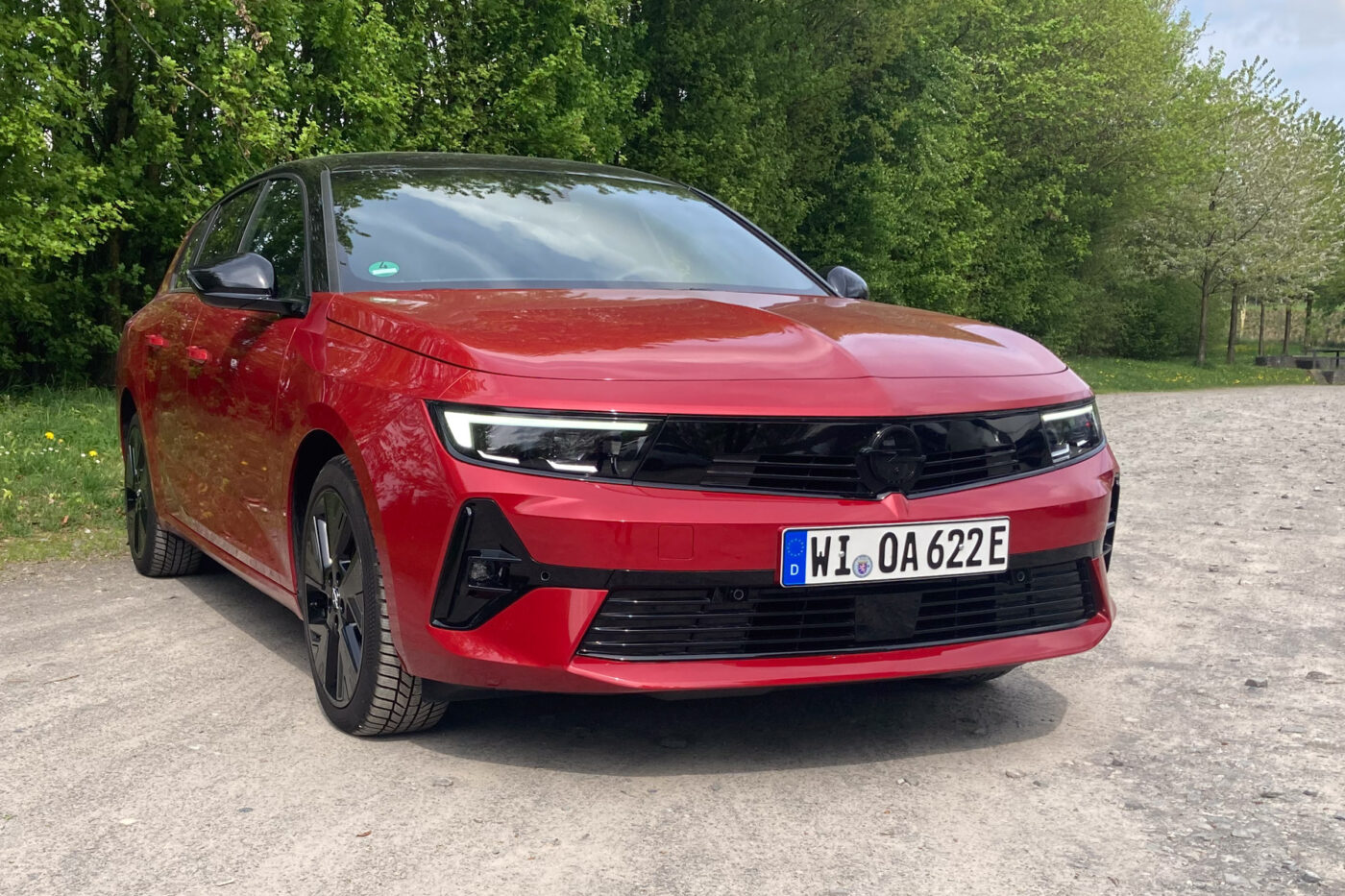
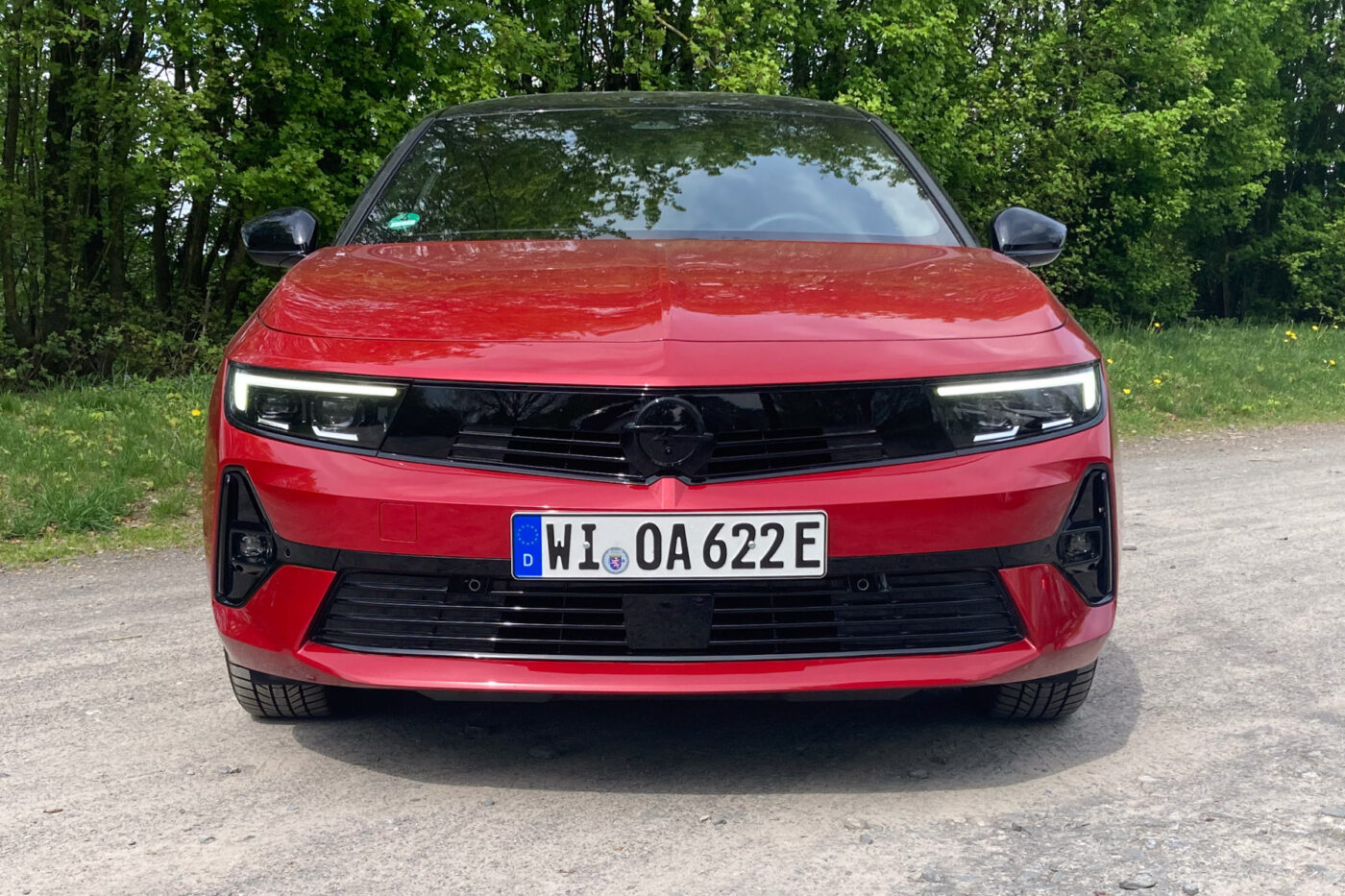
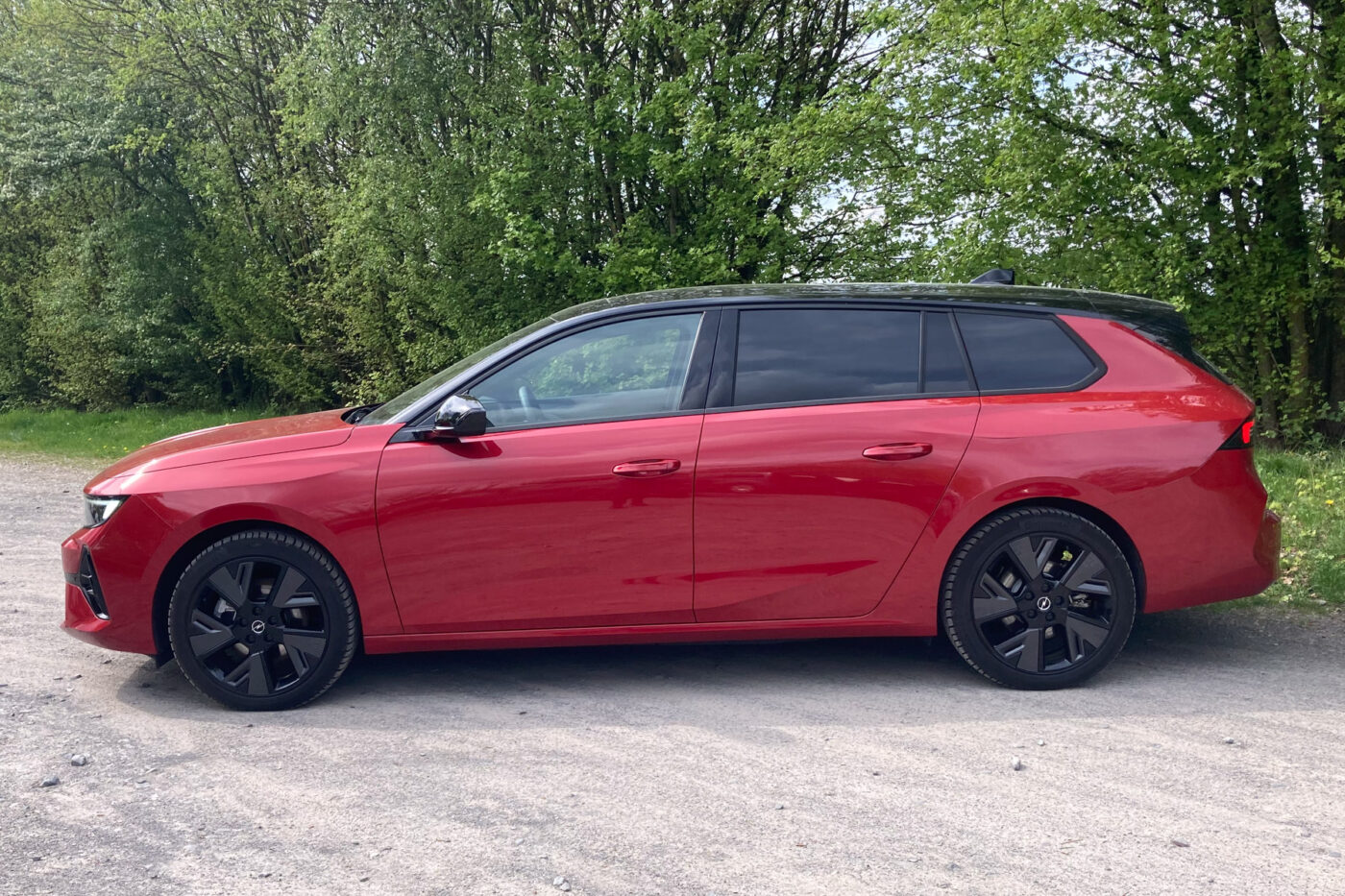
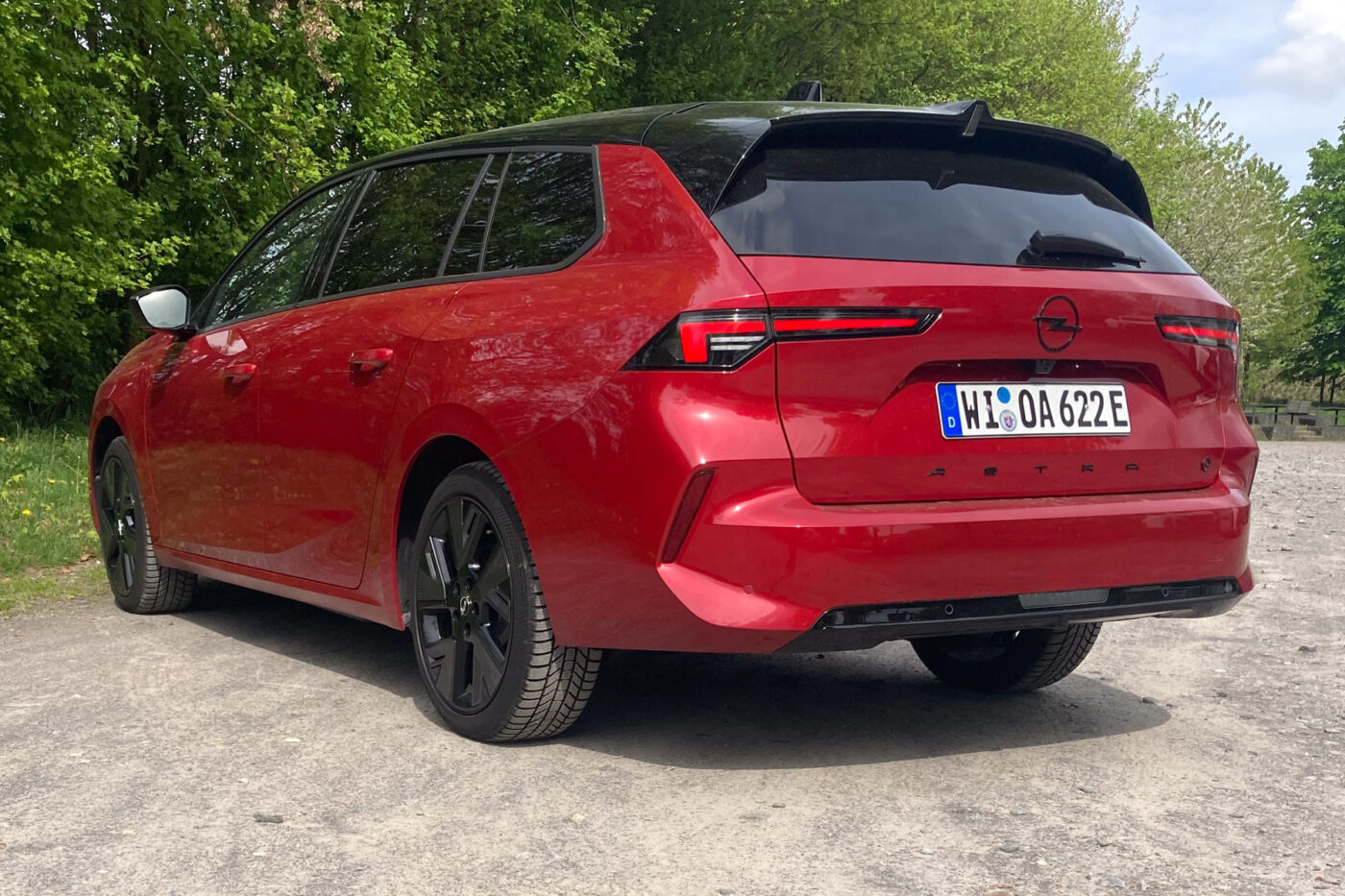
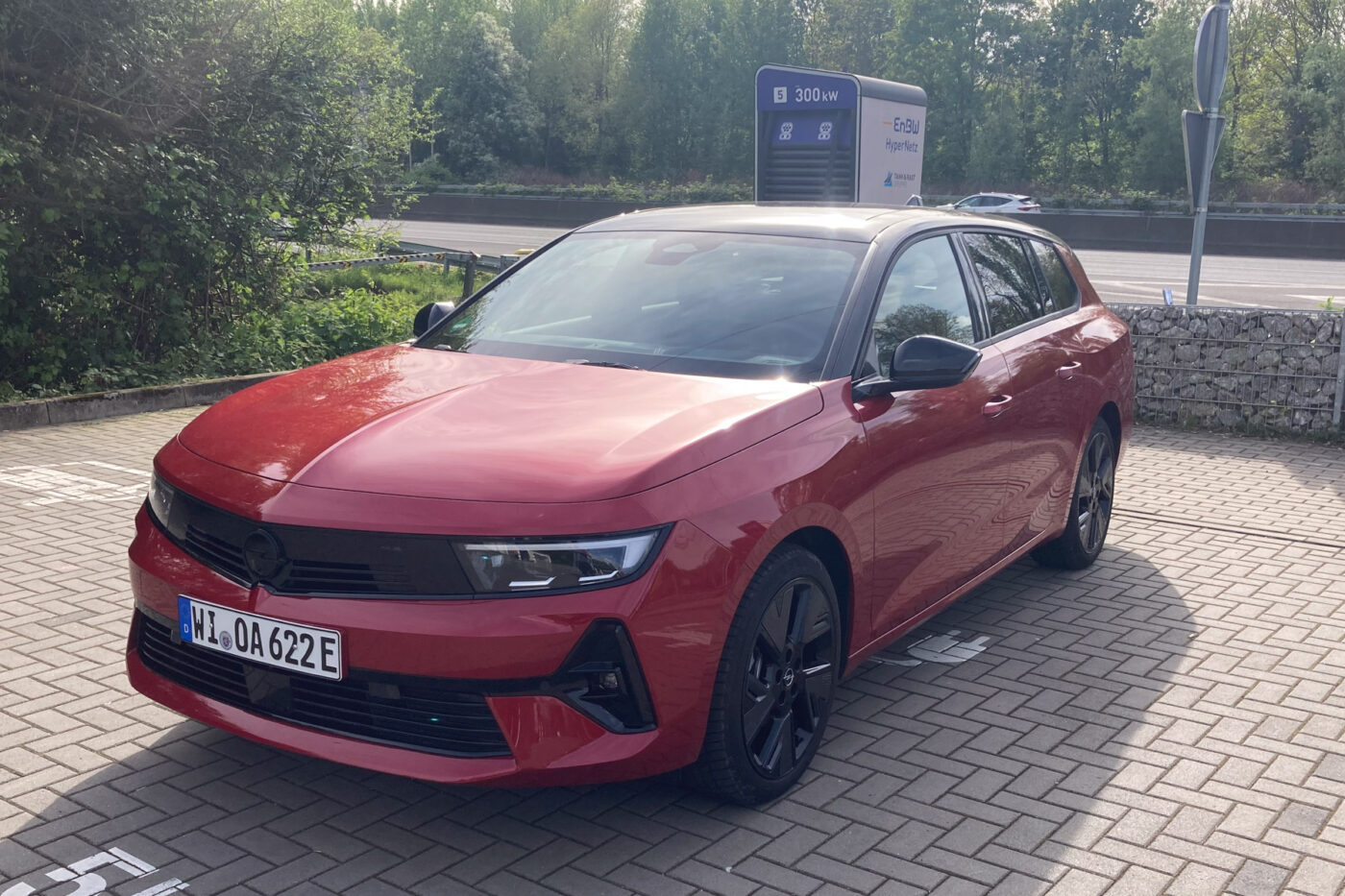
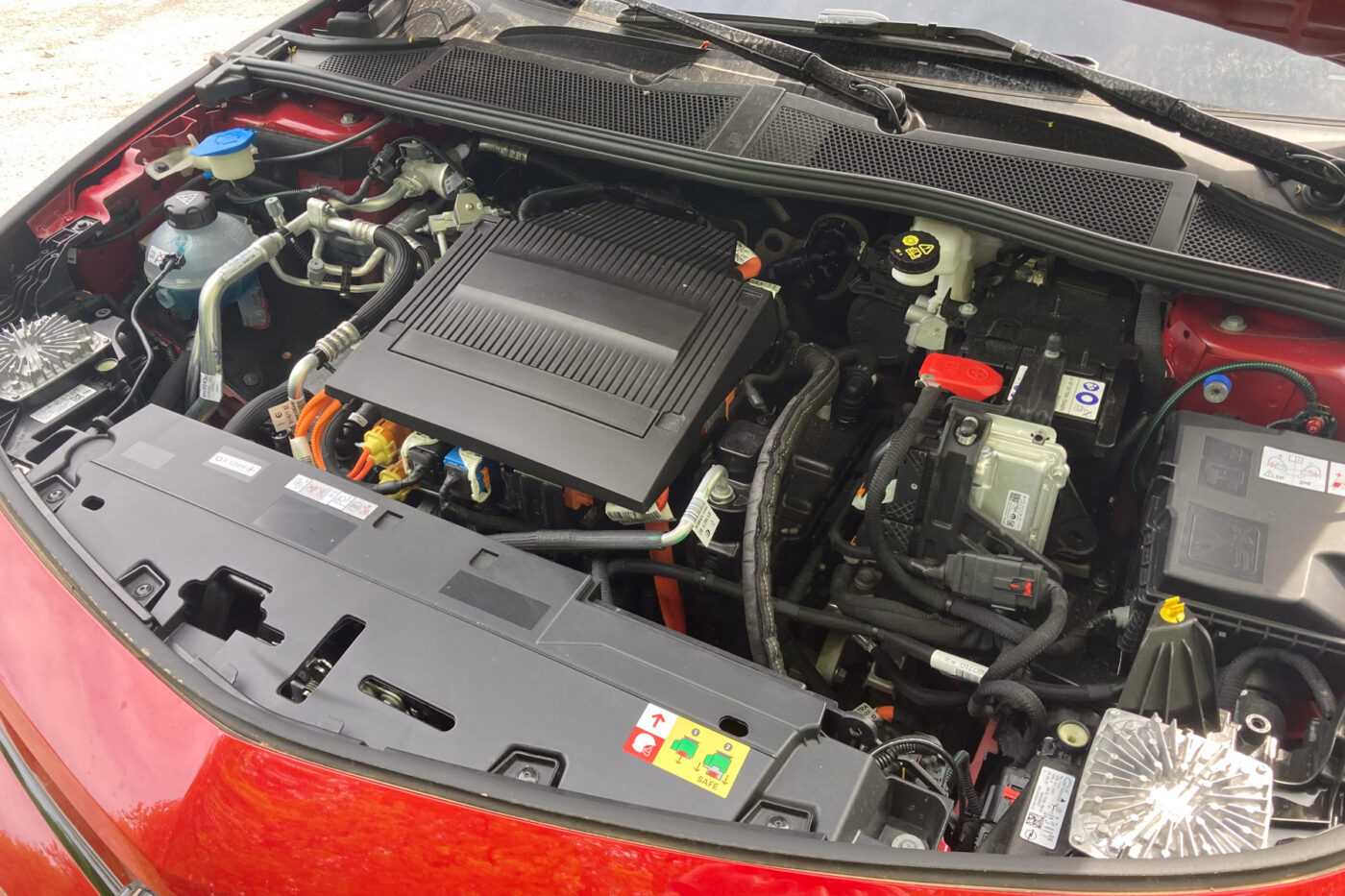
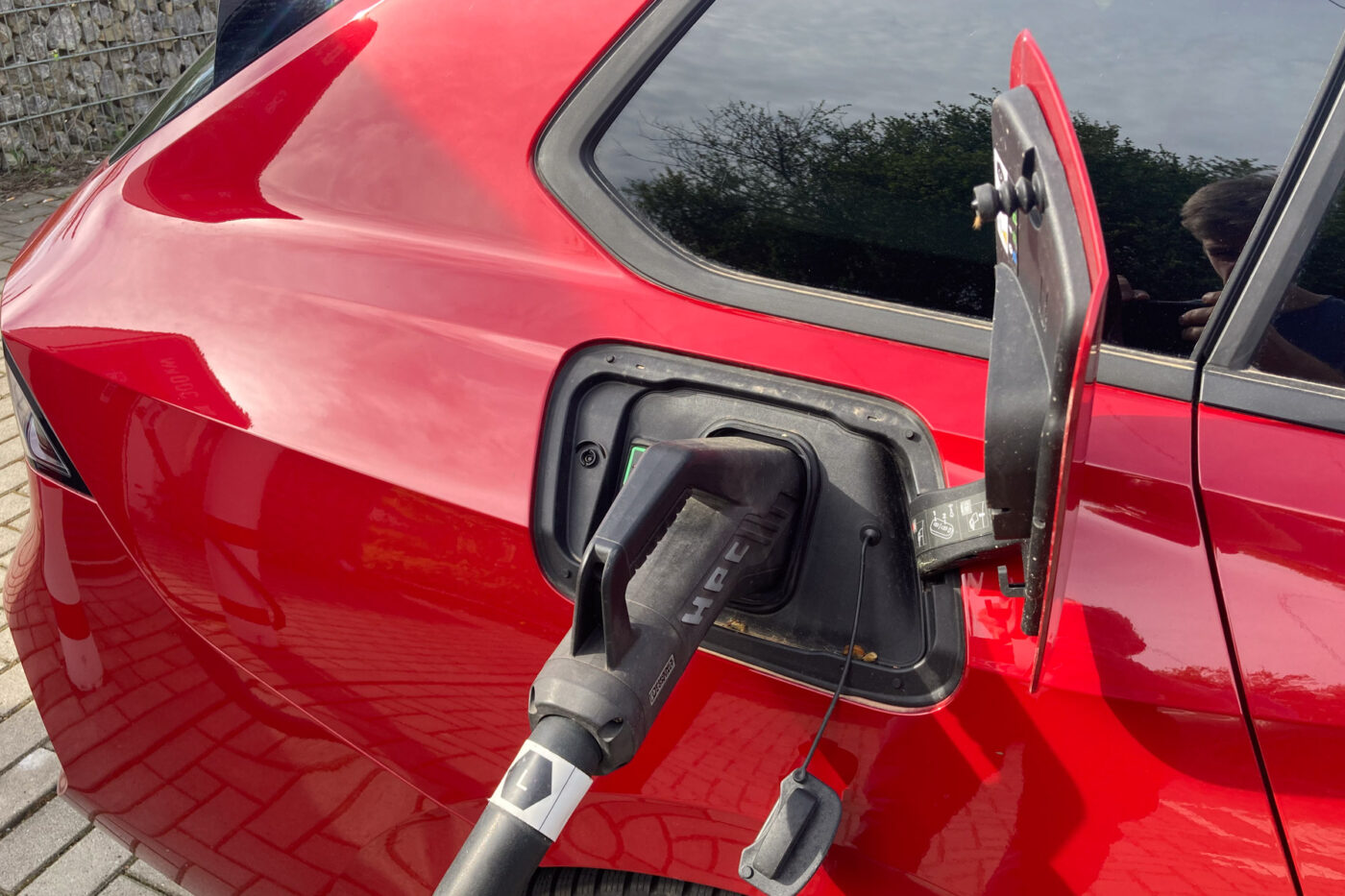
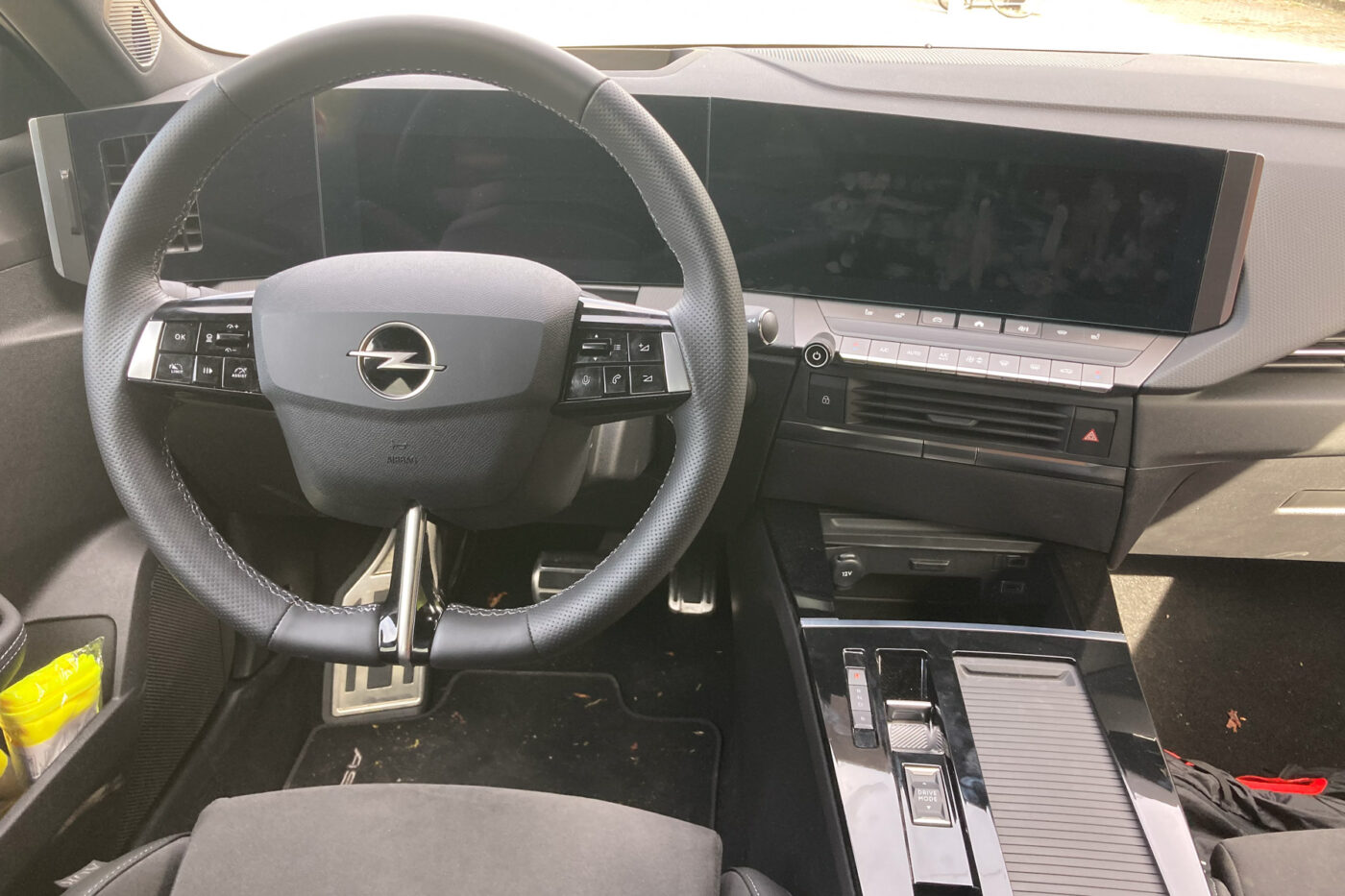
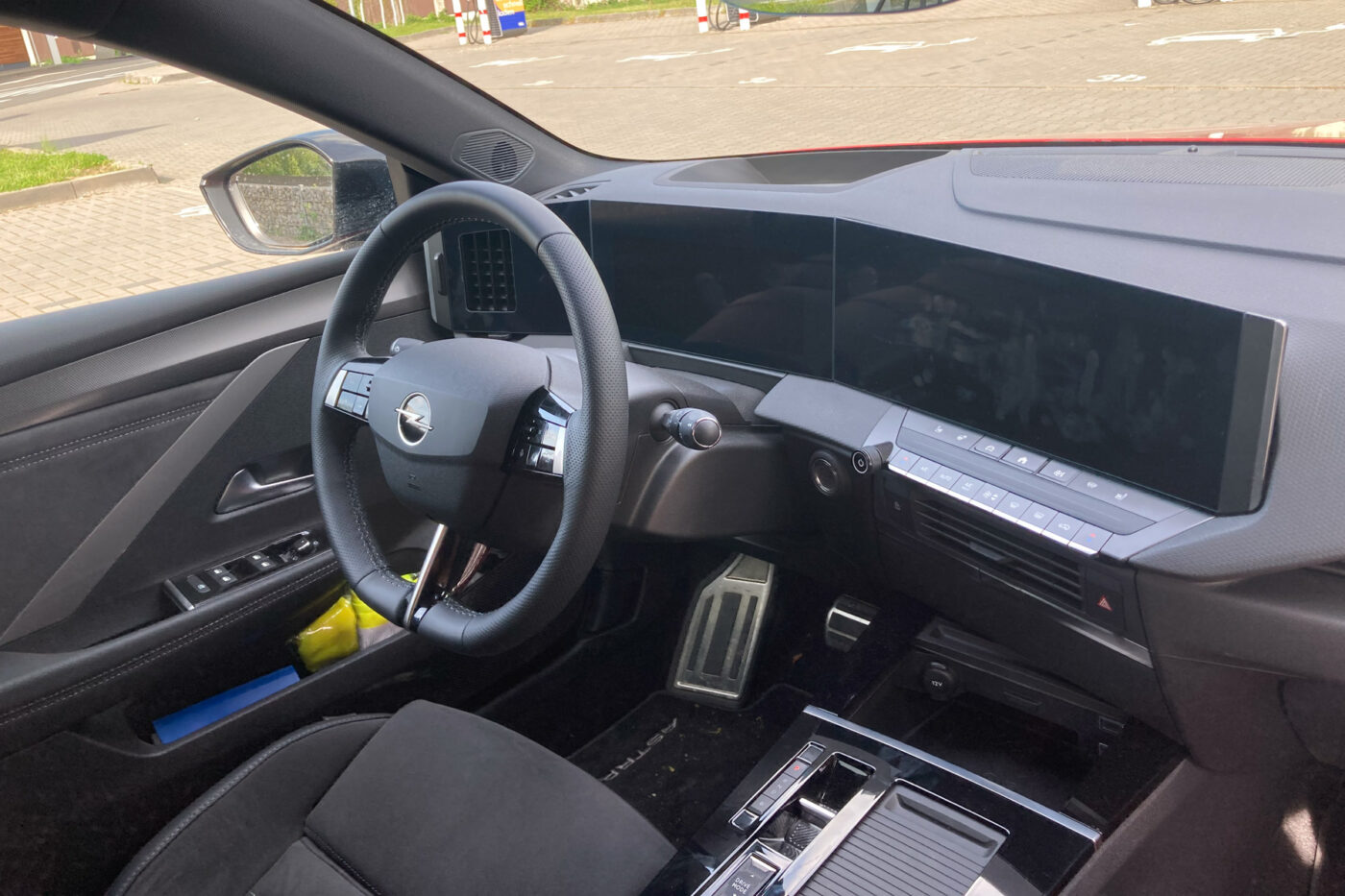
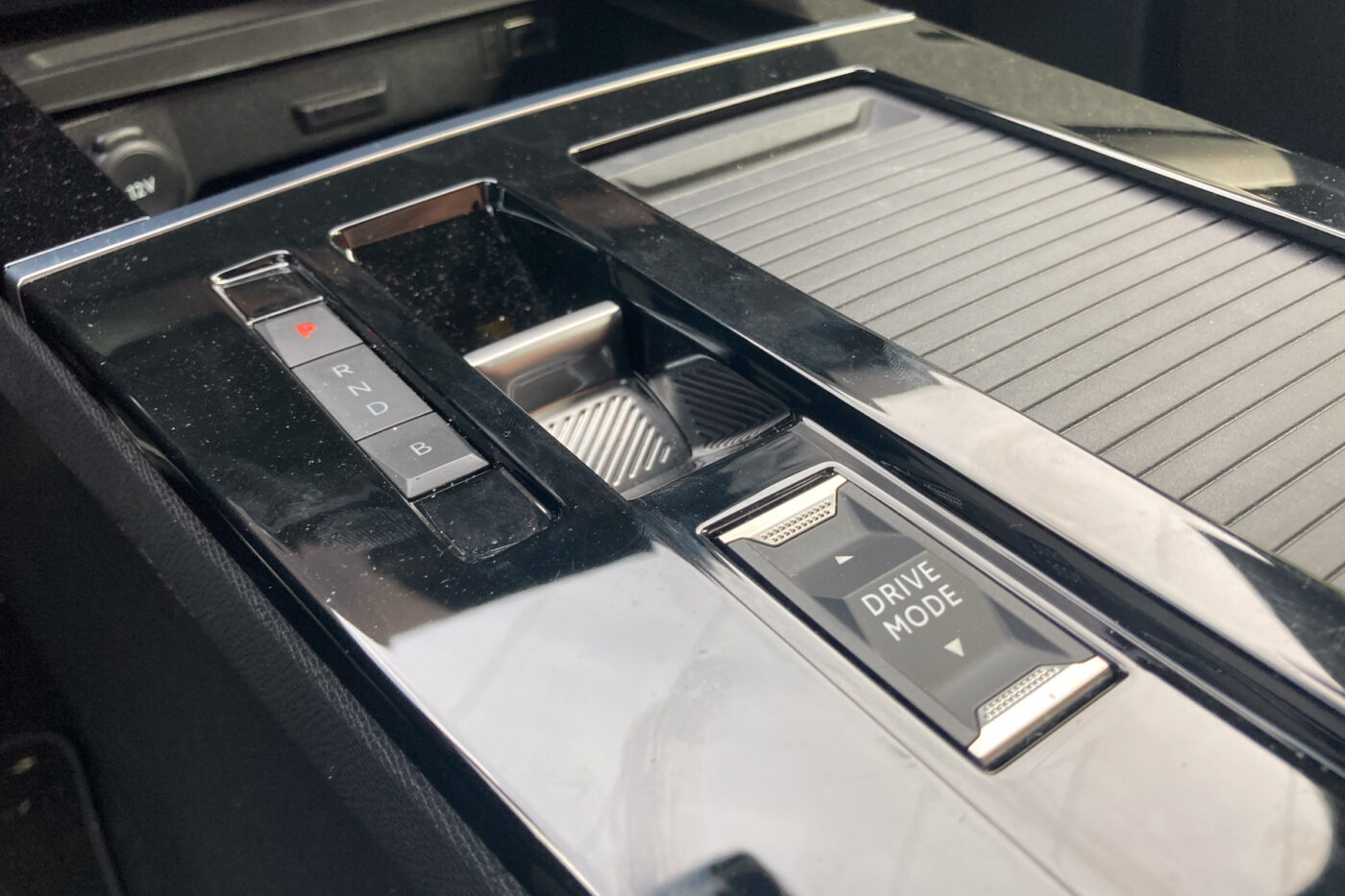
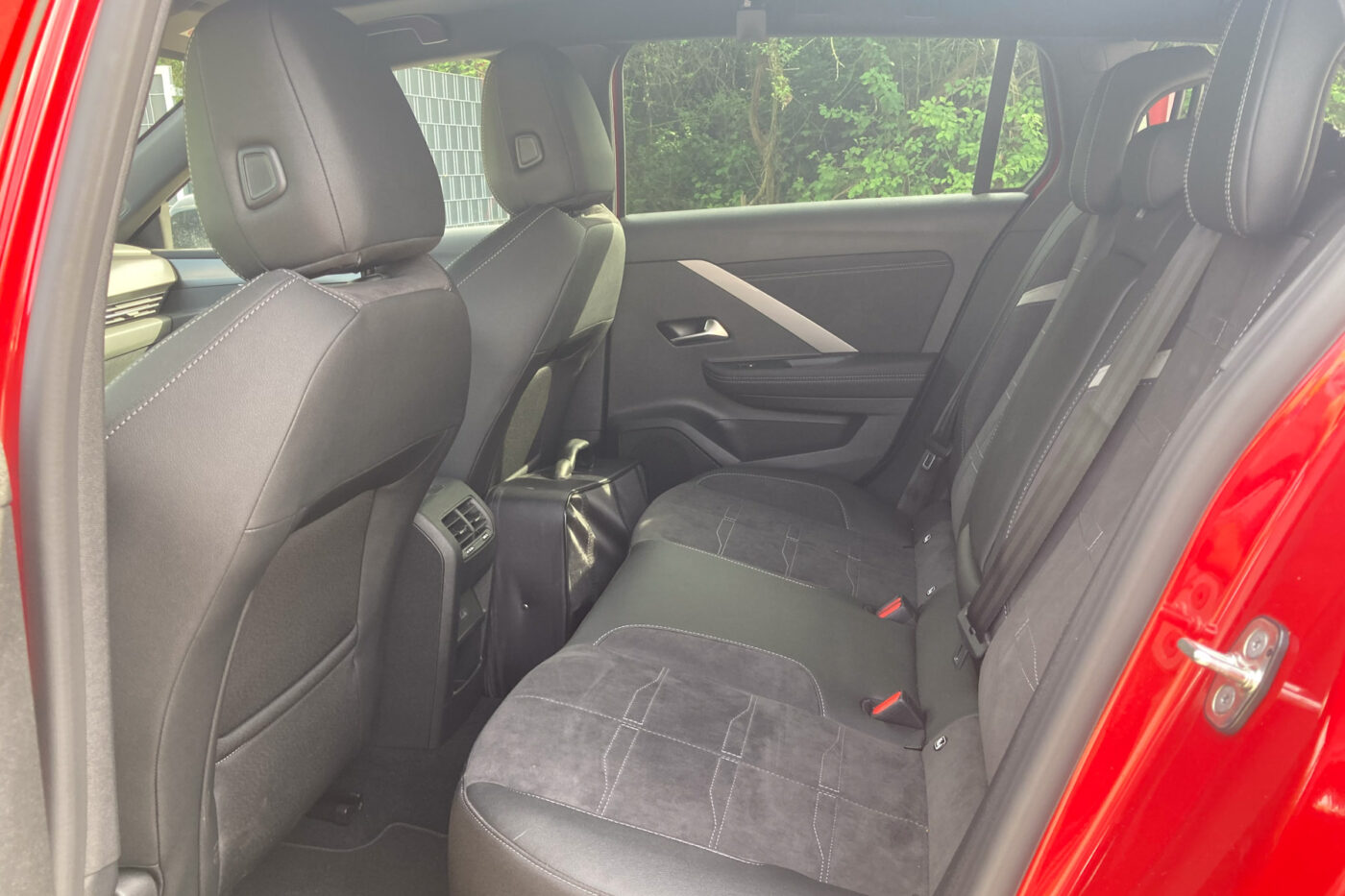
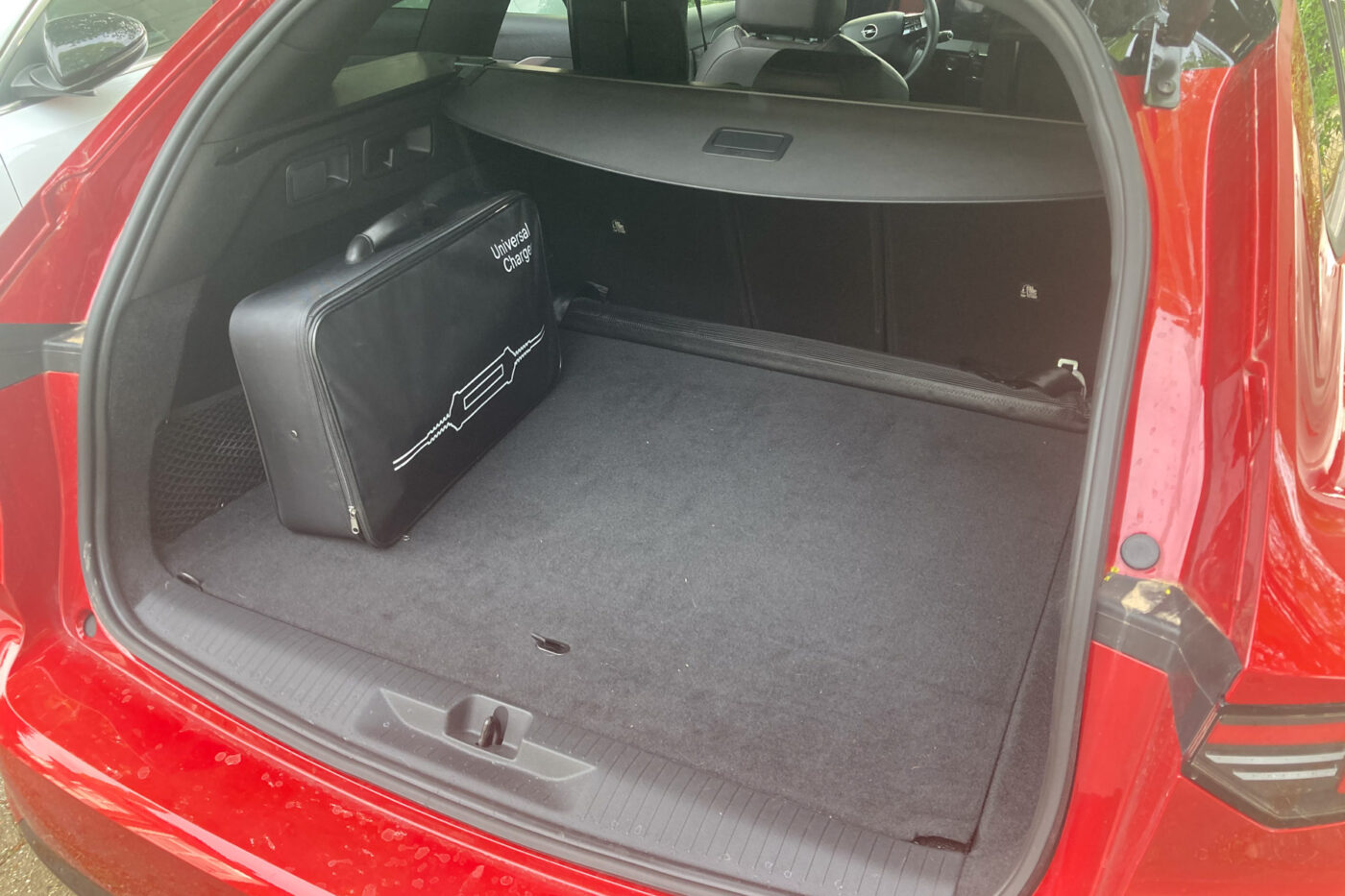
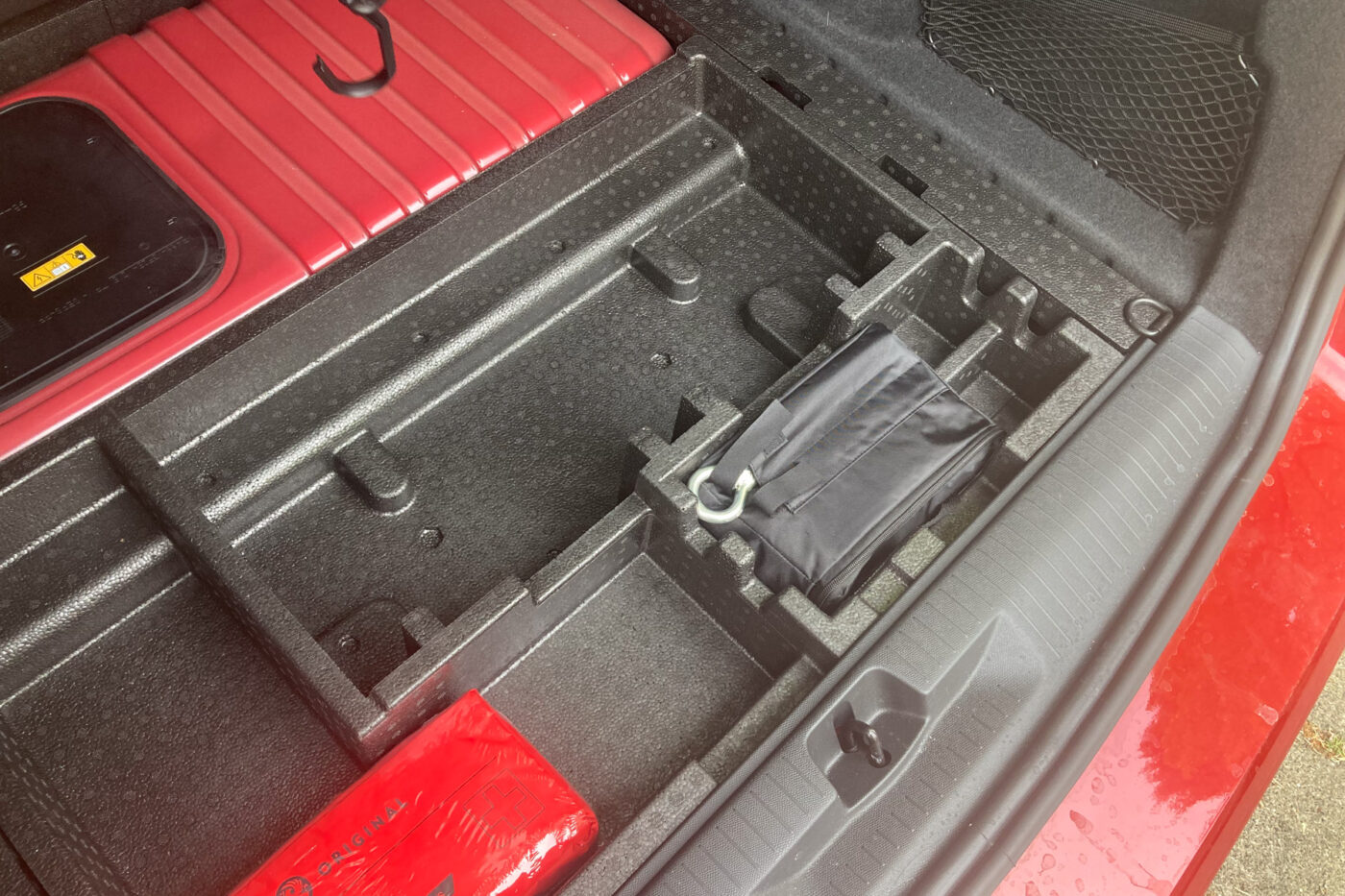
Our test consumption results in a practical range of 352 kilometres with a net usable battery capacity of 51 kWh. That is an outstanding figure, considering the size of the battery! And the difference to the 413 WLTP kilometres is also manageable at 15 per cent. That is made possible by the new electric drive, among other things: The Astra Electric exclusively uses the electric motor developed by Stellantis and Nidec with an output of 115 kW; previously, the Group mainly installed the EMR3 with 100 kW, which was purchased from Vitesco. The Stellantis-Nidec unit was named M3 and works according to the synchronous principle. As the focus during development was on efficiency, the inverter, for example, was fully integrated into the motor housing. It is not only more efficient in terms of space utilisation, but it also reduces losses.
A practical range of 352 kilometres sounds good because it means that (see our 283-kilometre drive from 93 to 13 per cent) over 280 kilometres are possible between two charging stops. Nevertheless, the question remained as to what would be possible with this electric motor if the battery was slightly larger (also optional) or the body was more aerodynamic. There is no question that Opel has worked hard on the latter, but the front of the EV remains relatively high and steep, and there are no details such as flush-fitting door handles. As a result, the Astra has a drag coefficient of 0.27. The motorway range could be noticeably increased in an aerodynamically optimised mid-size saloon with 0.20.
No significantly larger battery possible
However, such a model is not in the pipeline at Stellantis – an emphatically flat electric front is not compatible with the multi-energy concept that Stellantis is pursuing. And a larger battery isn’t in the cards either. The Astra Electric does not have a flat battery installed in the underbody between the axles. Instead, a flatter unit is installed transversely under the two front seats, and a higher unit with more modules sits transversely under the rear seat bench. There are no batteries under the footwell. Although this enables an identical seating position to the combustion engine, it also limits the installation space. More than the 54 kWh gross or 51 kWh net would only be possible with new cell chemistries with a higher energy density. A few per cent increase is likely in the coming years, but not to 70 to 80 kWh.
And that is a point that, in my opinion, severely limits the potential target groups for the Astra Sports Tourer Electric. With just over 400 WLTP kilometres or 280 to 300 kilometres between two charging stops, the range is sufficient for most people’s everyday driving. With some planning, taking the Astra Sports Tourer Electric on a long trip is still possible, as the colleague’s trip to Croatia proves. But only if you are experienced in electric mobility – more on that in a moment. A half-hour charging break every 280 kilometres on a holiday trip to southern Italy is unlikely to convince sceptics. Not in the year 2024.
Even an SUV like the Ford Explorer with Volkswagen’s MEB battery of just under 80 kWh achieves a WLTP range of 602 kilometres. In contrast, the Tesla Model Y, with a large battery and rear-wheel drive, achieves an even 600 kilometres. Such a battery in the flatter Astra would have a real-world range of well over 500 kilometres. A lot more people will realise that a short break is necessary on a holiday trip after more than 500 kilometres. The holiday trip can, of course, also be replaced by a long-distance business trip – after all, such estate cars are also popular company cars!
The charging breaks are perfectly acceptable in this segment: in the test, we even beat the factory specification of around 30 minutes by one minute for fast charging from ten to 80 per cent. After 20 minutes, the battery was 66 per cent charged, so it took a further nine minutes to charge the remaining 14 per cent to the usual 80 per cent mark. However, the Astra cannot even maintain the peak of just over 100 kW up to 30 per cent, after which the charging power drops continuously in stages. With the latest software update, a VW ID.3 with a 58 kWh battery (net) charges slightly faster on paper. But if you want an electric compact estate car, you can’t go for the ID.3.
One point that we were unable to test is the charging behaviour at low temperatures—it would have needed the snowstorm of the short December test again. That is because the Astra does not have manual preconditioning to bring the battery into the optimum temperature window before a charging stop. Nor does it have intelligent route planning with automatically planned charging stops and automatic preheating of the battery. And if the battery remains cold, the charging performance drops.
The lack of charging route planning is another point that may put electric mobility newcomers off. With years of electric car experience, you know how to cope. However, it is not convenient when the competition offers such a feature. Opel’s solution of outsourcing the charging route planning to the ‘MyOpel’ app and sending it to the car from there as a route with fixed interim destinations is only a half-baked workaround – dynamic adaptation to actual consumption, traffic jams or closures is not possible in this way.
In ‘classic’ car construction, the Astra is a good car for travelling
On the other hand, the Astra estate scores highly when it comes to criteria that are not so specific to eMobility: The chassis is neatly tuned; for a car with company car and family potential, a relatively comfortable but not too soft set-up was chosen. As bumps are well absorbed and the interior is remarkably quiet even at 120 kph, the Astra is an enjoyable car to travel in this respect.
The space for all five occupants is more than adequate for the class. There is plenty of head and legroom, but with three adults in the back seat, it can be a little tight around the shoulders. There is no problem with four people. Regardless of whether there are two or three people in the back, the boot has plenty of space; the factory specification is 516 litres. If the rear seat backrests are fully folded down (also possible in a 40:20:40 ratio), this results in a 1,553-litre load compartment with a maximum load length of 1.85 metres. As the floor area of the boot is 1.03 by 1.03 metres, even the rear window, which is slanted for aerodynamic reasons, is not so important: you could still stow an entire washing machine in the boot without having to fold down the rear seat backrests.
You hardly notice the combustion platform
Although there is plenty of space for big things, storage space for one small item has been forgotten. Opel has included a ‘Universal Charger’ with the test car, i.e., a Juice Booster in Opel’s design. The interchangeable adapters can be used to charge at almost any conceivable socket, but the bag for this has no fixed place: it either takes up storage space in the boot or has to be placed in the rear footwell – neither of which is ideal. There is no frunk under the bonnet or a suitable storage compartment under the boot. So every customer has to ask themselves whether they really need the ‘Universal Charger’ and its flexibility or whether a conventional, more compact type 2 cable is sufficient. During the test period, I packed the bag from the back to the front and back again several times.
The Astra’s combustion engine platform is noticeable due to the absence of a frunk or because of the two-part battery arrangement, but not otherwise. The quality and choice of materials are also on a class-standard level. The centre console of the electric model has no gear lever, and there are two practical storage compartments next to the small gear selector lever and the driving mode selector switch. If you want to criticise something here, such large surfaces that are also touched should not necessarily be in high-gloss black – the material attracts dust and fingerprints.
Conclusion
I was sceptical when I first heard that the Astra would not have a larger battery than the Stellantis standard. The concept didn’t seem to work with the steep front end and the motorway consumption previously known from the old engine. The efficiency shown by the Astra Sports Tourer Electric in the test has changed that! The car offers a decent range and simply a lot of space.
I still question whether the Astra has what it takes to become a popular first-time family car or fleet bestseller and stop the estate’s decline. Not offering important features such as convenient charging route planning, (automatic) battery preconditioning, or a long-range battery for an extra charge in 2024 is likely to deter some buyers.
That is because the Astra is not an economy model when it comes to price. With a base price of 43,490 euros in Germany, it is undoubtedly competitively priced – more expensive than an MG5 Electric, for example, but not exorbitantly expensive with more space and production in Germany. However, if you choose the GS equipment level (from 46,560 euros) and add an equipment package here and there, the list price rises to 52,000 euros. The Astra then has to compete with the MEB SUVs from the VW Group or a Tesla Model Y. In this comparison, the Astra lacks some features in models of roughly the same price, so it comes back to the question: Estate car or SUV?




1 Comment